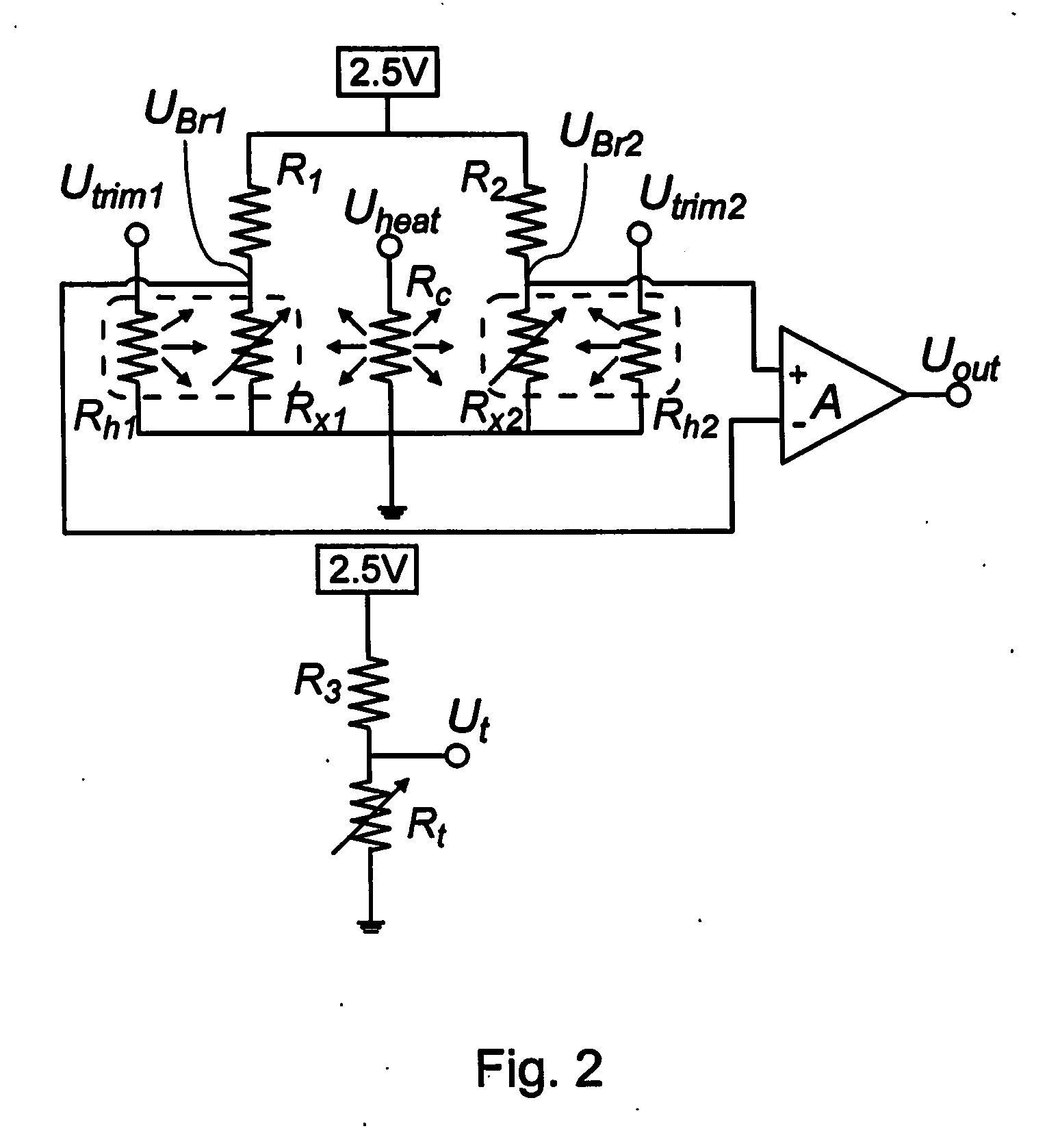Adjusting analog electric circuit outputs
- Summary
- Abstract
- Description
- Claims
- Application Information
AI Technical Summary
Benefits of technology
Problems solved by technology
Method used
Image
Examples
Embodiment Construction
[0051] Throughout the description, the term “output parameter” should be understood as meaning any parameter representing a characteristic of an output signal, such as amplitude, voltage, current, frequency, sensor sensitivity, offset, gain, temperature variation (linearity, non-linearity, or an actual value thereof), etc.
[0052] The term “temperature coefficient of resistance”, and its abbreviations “TCR”, “RTCR”, should be understood in general to include both linear and non-linear coefficients of temperature variation of resistance.
[0053] The term “active semiconductor device” should be understood to include diodes, transistors, metal-oxide-semiconductor devices, field-effect transistors, and any other non-passive electronic component made in a semiconductor wafer or chip.
[0054] While the prior art demonstrates that the TCR changes when one trims the resistance, it does not show how to trim the TCR while maintaining a constant resistance value.
[0055] This approach to trim the ...
PUM
| Property | Measurement | Unit |
|---|---|---|
| Temperature | aaaaa | aaaaa |
| Electrical resistance | aaaaa | aaaaa |
| Electric potential / voltage | aaaaa | aaaaa |
Abstract
Description
Claims
Application Information
 Login to View More
Login to View More - R&D
- Intellectual Property
- Life Sciences
- Materials
- Tech Scout
- Unparalleled Data Quality
- Higher Quality Content
- 60% Fewer Hallucinations
Browse by: Latest US Patents, China's latest patents, Technical Efficacy Thesaurus, Application Domain, Technology Topic, Popular Technical Reports.
© 2025 PatSnap. All rights reserved.Legal|Privacy policy|Modern Slavery Act Transparency Statement|Sitemap|About US| Contact US: help@patsnap.com



